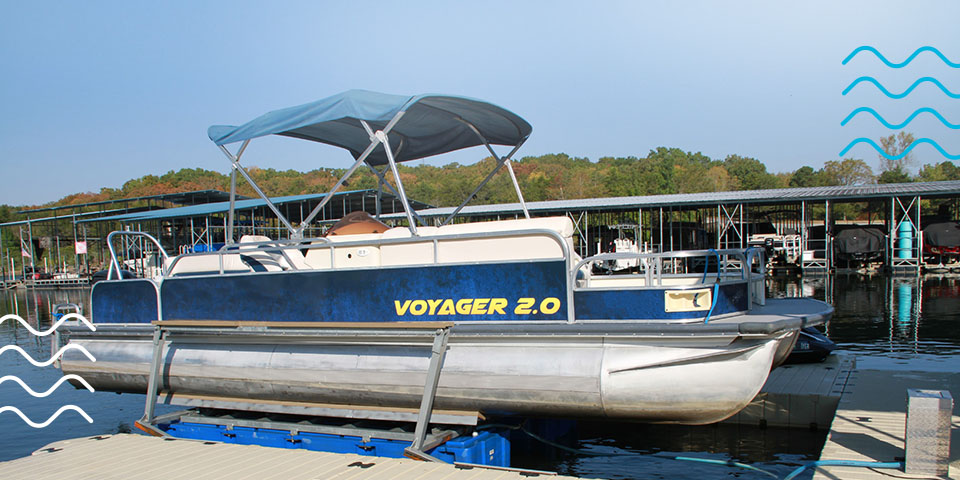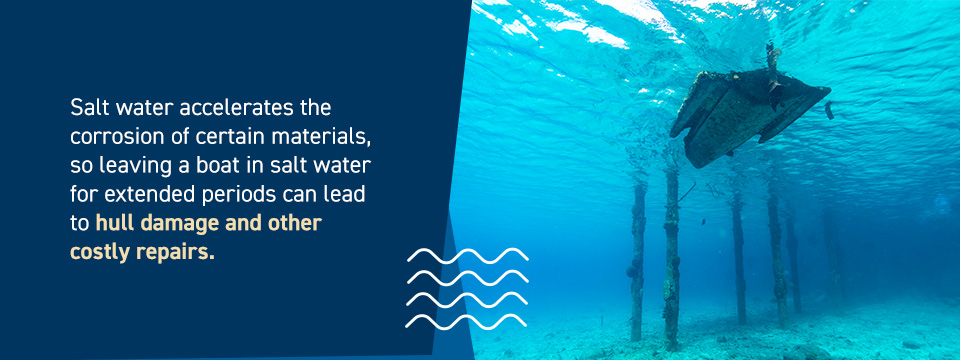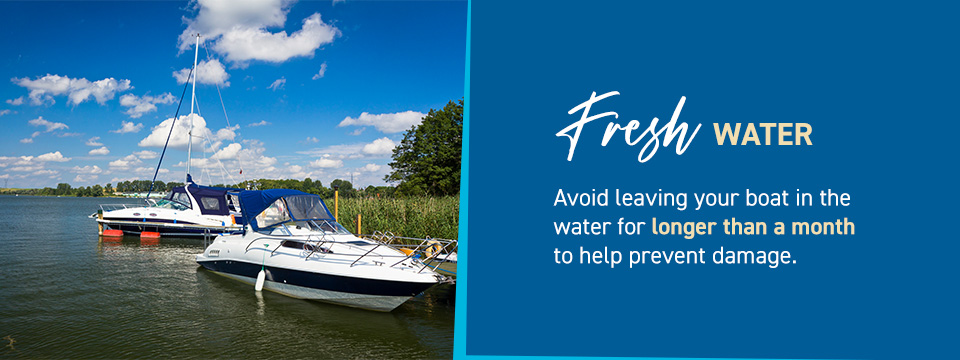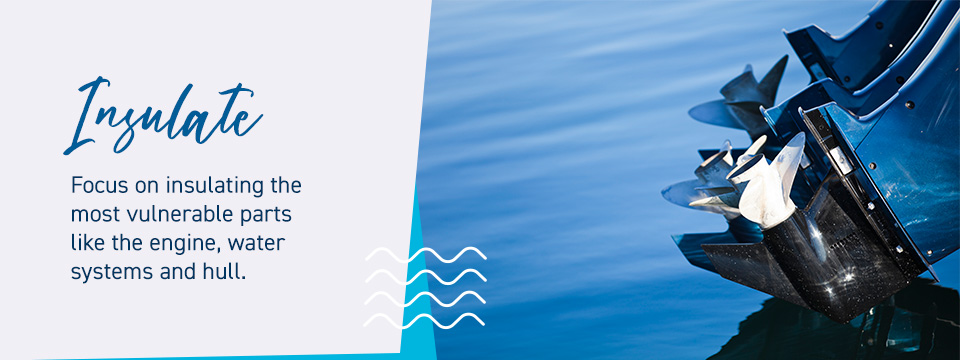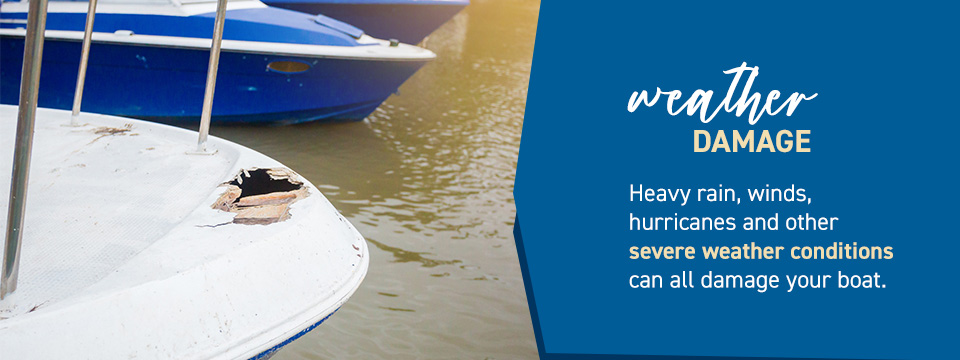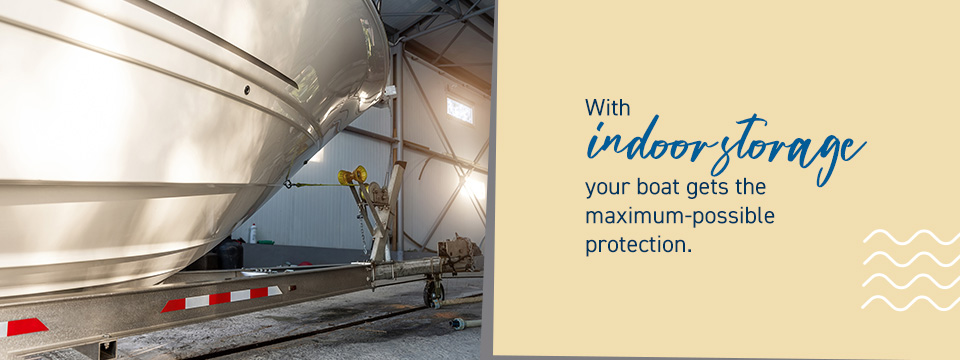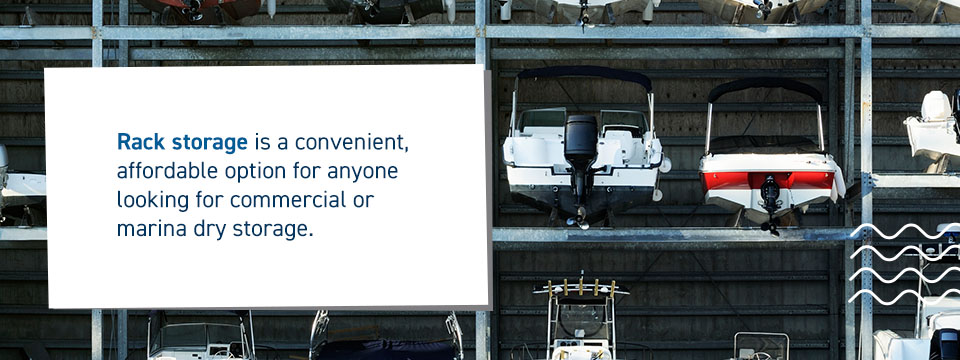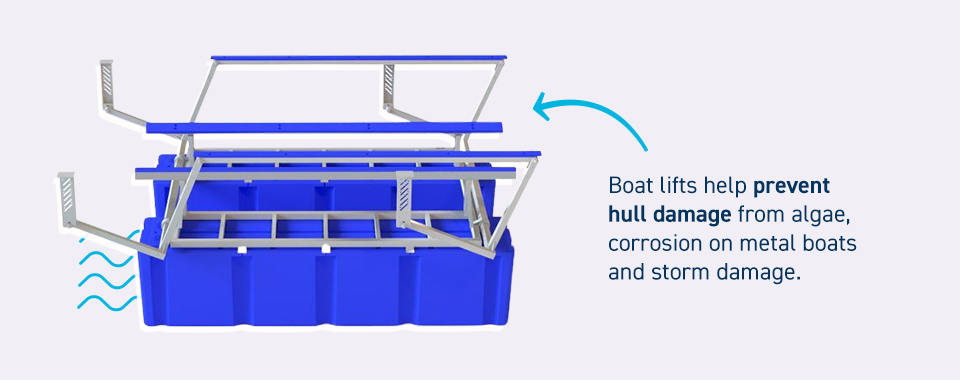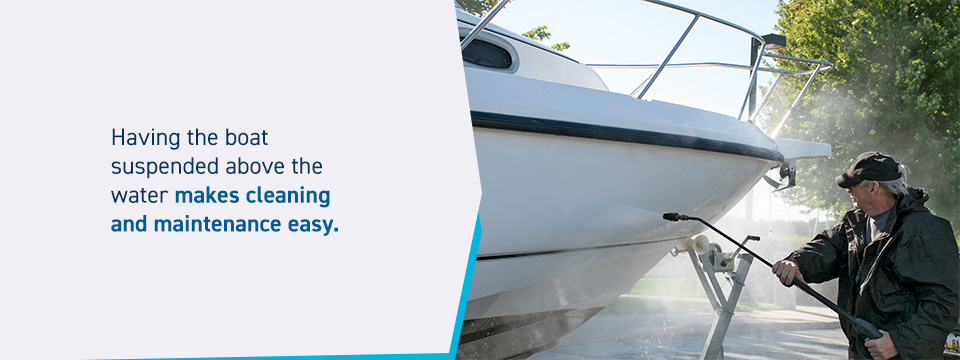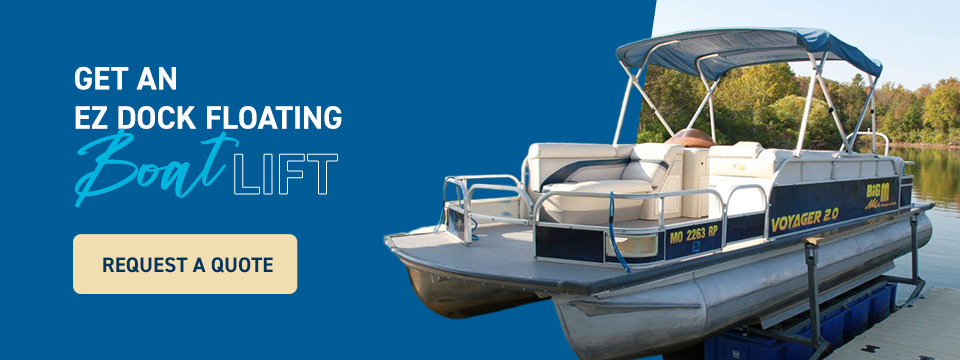Filters
Why Its Important to Keep Your Boat Out of the Water
While the best part of having a boat is using it, it’s essential to properly store your boat no matter how much you’re on it. Your boat storage method can significantly impact your boat usage time and life span. Dry storage for boats helps protect your boat from damage while allowing you to use it whenever you want. With the right boat storage, you can prevent boat wear and spend more time on your boat.
What Is Dry Storage for Boats?
Dry boat storage is an area or facility used to store boats out of the water when they’re not in use. When you’re done using your boat, you can choose to keep it in the water or “dry” store it, which means storing it on land. Dry storing involves holding lots of boats on racks elevated off the ground. These racks, designed specifically for boats to minimize the risk of harm to the hull, can be covered or open depending on the facility. Covered racks offer more weather protection but might not be necessary depending on where you live.
Dry storage brings boats out of the water, while methods like wet storage keep the boats in the water even when you aren’t using them. Dry boat storage has several benefits over wet storage, allowing boat owners to protect the boats while storing them securely. Focusing on quality boat storage helps protect your investment and extend your boat’s life.
Dry boat storage offers you excellent protection from the elements, which can easily harm your boat over time. Keeping your boat out of the water when not in use helps prevent damaging issues like corrosion, marine life growth and hull osmosis. Being covered helps reduce ultraviolet (UV) ray exposure, minimizing exterior and interior component damage.
Overall, dry storage is an excellent boat storage method. You can protect and preserve your boat’s condition when not in use for a longer life span and a better-looking boat. Many boat owners require boat storage for the off-season, and dry storage helps meet this need while freeing up water space for other users. With the right storage method, you’ll secure your investment and enjoy the convenience of quick access.
How Long Can You Keep Your Boat in the Water?
The amount of time you can keep your boat in water depends on several factors. Salt water accelerates the corrosion of certain materials, so leaving a boat in salt water for extended periods can lead to hull damage and other costly repairs. Boats in fresh water can sit for longer but will still develop issues over time. Boat materials, water type and boat type affect how long you can keep your boat in the water. Typically, however, keeping boats in the water for extended periods will lead to issues that compromise the boat’s life span.
You’ll need to tailor your boat storage for the water your boat sits on — salt water and fresh water require different maintenance routines.
Salt Water
You should avoid leaving your boat in salt water for too long. Most boats made for saltwater use are aluminum or fiberglass, with special treatments to reduce corrosion. However, salt water will still leave wear on your boat if it sits for extended periods.
Salt water has high salinity and currents — these conditions will lead to faster water wear on your boat. If you’re docked in warm salt water, barnacles, algae and mussels will thrive. They can grow around and on your boat, damaging it and harming components. While saltwater boats need antifouling paint to help prevent aquatic life from growing on them, there are chemicals on some antifouling paints that the government restricts since they can harm the local ecosystem. Constant moisture will also degrade your boat over time.
The more your boat moves in salt water, the more you can reduce saltwater wear. A stationary boat constantly sitting in water means the salt can stick to its components and it encourages algae and barnacle growth. If you use your boat every few days, the motion might prevent this growth and wear from accumulating. However, even if you use your boat often, you’ll still need to flush out the salt water from your engine to protect it from damage.
Fresh Water
Fresh water is less corrosive than salt water, so you can leave your boat stationary longer. Still, avoid leaving your boat in the water for longer than a month to help prevent damage. Lake weeds, mollusks and algae will all spread over your boat if allowed — storing your boat when not in use helps prevent damage to the ecosystem. Leaving your boat in the water also allows condensation and mildew to collect, damaging components.
While less damaging during shorter periods than salt water, fresh water can still lead to hull damage, fouling and algae or barnacle growth. Additionally, vessels in fresh water tend to develop blisters. Blisters happen when water absorbs through the hull’s gel coating, permeating its interior laminate and making the paint bubble. You can avoid boat blisters with regular drying out of the water.
Can You Keep a Boat in the Water in the Winter?
The short answer is yes, you can keep a boat in the water in winter. However, you need to consider all possible issues and take the proper steps to protect your boat from winter harm. Ice, freezing temperatures, and more can all harm your boat during the winter. You can leave it in the water with proper preparation, but you might see more wear and tear than if you dry-stored your boat.
All boats need the right winter equipment and winterizing process, regardless of where you store them during winter. You should also winterize your boat dock to protect it from damage. If you’re in an area with severe winters, you should use dry storage for your boat. Even with good winterizing measures, ice and snow can quickly damage or sink a vessel. Additionally, ice expansion can cause structural issues, cracks, leaks and component damage.
Areas with harsh winters mean more boat-protection measures, while boats in climates with milder winters take less effort to protect. If you live in a more temperate climate, you can leave your boat in the water with the right protection. Minimize your winter damage risks with these methods:
- Winterize: You should winterize your boat before freezing temperatures arrive. Drain water from all systems, use antifreeze as needed and protect the engine from freezing. Winterizing all boat components will reduce your chances of damage during winter from the water expanding as it freezes.
- Insulate: Use insulating materials to insulate the boat, keeping the components from getting too cold. Focus on insulating the most vulnerable parts like the engine, water systems and hull. With insulation, your boat will retain heat, and you’ll reduce its chances of freezing.
- De-ice: Installing a de-icer helps prevent ice from forming around your boat. They keep the water near your boat moving, so it never has a chance to freeze. Since ice can crack and sink boats, de-icers can prevent ice damage before it starts.
- Check regularly: Regular boat inspections are essential for preventing damage. The more you inspect your boat, the faster you’ll catch damage. Any damage that goes unchecked will build up and lead to expensive repairs or replacements.
While these precautions can help reduce your risk of winter damage, they are still less effective than dry storing your boat. Allowing your vessel to stay in the water all winter increases your chances of winter-related damage. Taking your boat out of the water during the winter ensures long-term water damage cannot happen.
Keeping your boat on the water is never a good idea if you’re in an area with severe winters. Check with your local boatyard, marina or marine professional — they will have the best advice for preventing winter damage, and they can let you know what they recommend for winter boat storage.
The Risks of Keeping Your Boat in the Water Year-Round
Keeping your boat on the water year-round comes with several risks. As a boat owner, you must understand these challenges to make the best decision for your boat and protect it during the year. While keeping a boat in the water can seem more convenient, it adds several challenges that can damage your boat over time. Here are some of the potential risks you face when keeping your boat in the water all year:
- Corrosion and blisters: Metal boats left in water will corrode over time. Corrosion degrades your engine, reducing component life spans and compromising the integrity of essential parts. Metal boats in salt water are at high-risk for corrosion if left all year. Blisters caused by osmosis are common for freshwater boats — blistering bubbles the paint, exposing the structure to subsequent corrosion.
- Hull damage: Boats in the water year-round will see more instances of hull damage thanks to corrosion, blisters, algae and marine life. Algae and marine life will begin to grow on and around boats that are stationary for too long. Over time, they’ll cause surface damage and structural issues. Cleaning them off regularly is essential, but you need to keep your boat moving or out of the water to prevent them in the first place.
- Increased maintenance costs: The more standing water contact your boat has, the more maintenance you’ll perform. Water and marine life will wear away at your boat exterior, leading to more frequent repaints. Additionally, these conditions will mean your boat bottom is dirty more often — this slows down your boat, decreasing performance and fuel efficiency. The harder the boat has to work, the more fuel it consumes and the more money you’ll spend on fuel. If the boat is in water all year, it will need more repairs and money to keep it working.
- Weather damage: Exposed boats in the water means a higher risk of weather damage. Heavy rain, winds, hurricanes and other severe weather conditions can all damage your boat. Changing water levels and freezing can harm your vessel, while severe storms can sink your boat entirely. The more extreme conditions your boat sees, the higher your chance of expensive damages is.
- Higher risk of sinking: Modern boats are excellent at staying afloat. However, leaving your boat unattended on the water for extended periods increases the chance of damage or malfunction. Failing components or structures might go unseen initially, but they can allow cracks and leaks that could flood the hull, strand you on the water or sink the vessel. Regular inspections and boat use reduce the chances of severe issues going unseen and allow you to keep your boat in better condition.
Taking the right precautions will help reduce the risks of keeping your boat in the water all year. However, these risks are much more easily prevented with dry boat storage. Dry boat storage eliminates many of the issues caused by sitting in water all year, reducing the time and money spent protecting your boat when it’s not in use.
Dry Boat Storage Options
Dry boat storage protects your boat from water and element damage whenever you aren’t using your boat. Keeping the boat out of water minimizes risk and gives you peace of mind when off the water. There are several options for dry storage, including indoor or outdoor commercial marinas, storing it at home and using boat lifts.
Commercial or Marina Indoor Boat Storage
Commercial indoor boat storage facilities are enclosed spaces specifically designed for storing boats. Many of these facilities have climate-control systems to protect your boat from extreme temperatures, ultraviolet rays and humidity and ensure it’s kept in optimal conditions. With indoor storage, your boat gets the maximum-possible protection. Indoor storage also helps reduce your chances of theft or vandalism since the boats are locked away from unauthorized entry.
While indoor storage offers the most boat protection, it’s also expensive. Additionally, indoor facilities can be challenging to get a spot in since they have more limited space than other options.
Commercial or Marina Outdoor storage
Outdoor commercial boat storage, known as dry rack facilities, is extremely popular with boat owners. These facilities are less expensive than indoor ones but still provide good boat protection and storage. Boats are stacked vertically with a cover over the top row for element protection. These facilities usually have more slips, so they’re easier to get a spot in than indoor ones.
While outdoor storage is less expensive than indoor, it offers less overall protection. The boats are covered on top but are exposed to the weather on the sides. They’re still well-protected from the sun and weather, and they are a better alternative to wet slip storage, but they don’t provide the same protection as a complete indoor set-up. Rack storage is a convenient, affordable option for anyone looking for commercial or marina dry storage.
Storing a Boat at Home
Trailers allow homeowners to store their boats at home conveniently. Since trailers are easy to move, you can store your boat on your property, a marina or a storage yard. Trailers offer boat owners a more flexible transportation and storage method for their vessels. It’s a great option for anyone looking to move their boat from storage to the water quickly.
While trailers are more flexible than commercial storage, you’ll have to invest in a trailer and trailer upkeep. You’ll also need to regularly inspect the boat and ensure it took no damage while sitting or being transported. If you want direct control over your boat storage and don’t mind the extra time investment of owning a trailer, it’s an excellent storage option.
Boat Lifts
Boat lifts are another method for dry storing boats — they’re convenient, easy to use and protect your boat from water damage year-round. Boat lifts are attached to your dock and they hold your boat above the water while it’s not in use. Boat lifts make loading and unloading easy — they can lower your boat into the water and raise it back up when you’re done without leaving the dock with the craft.
Boat lifts help prevent hull damage from algae, corrosion on metal boats and storm damage. Preventing these issues helps reduce maintenance costs caused by frequent damage and repairs. They also make it so that your boat is always easily accessible — it’s quick to get in and out of the water since the boat is only in the water when it’s in use. You save time by cutting out boat transport since it’s always above the water.
Finally, boat lifts also make for easier cleaning, safer boarding, better protection from damage and overall improved boat performance. With the boat held securely above the water, it’s safe from long-term boarding damage. Additionally, it makes for more stable boarding since the boat won’t rock on the lift as it does in water. Boat lifts are the best way to conveniently store and use your boat without letting water damage it.
The one downside to a boat lift is the reduced weather protection. Boat lifts don’t have covers like commercial racks, so your boat can take exposure damage over time. To minimize exposure damage, you can do things to protect your boat while you aren’t using it, such as building a structure around the dock and lift.
Benefits of Utilizing a Boat Lift
Boat lifts are some of the most efficient, convenient options for dry boat storage. With a floating boat lift, you get all the benefits of dry storage without taking your boat from the dock. Here are some of the key advantages you can expect from using a boat lift:
- Accessible: Since the lift attaches to your dock, your boat is always easily accessible. It stays right where you dock your boat, allowing you to walk onto the dock and into your boat in no time. Instead of having to get your boat from storage to the water, it’s always ready for castoff. Lifts eliminate the need for trailers and ramps when launching since they do all the work for you.
- Easy cleaning: Having the boat suspended above the water makes cleaning and maintenance easy. You can get into every crevice and work around the whole boat to keep it well-maintained and clean.
- Safer boarding: The boat lift provides more stability than water for safer boarding. Passengers won’t deal with unstable conditions when they board the lift — it holds them both perfectly steady.
- Faster boat use: Since the lift loads and unloads the boat directly into the water, you get more boat use time. Loading and unloading from off-site require more time and transportation. With a lift over the water, you’re in and out much faster than other dry storage methods.
- Damage protection: Keeping your boat above the water reduces damage from sitting in water. Lifts also protect from environmental damage and can help reduce theft and vandalism. Lift storage makes the boat less accessible when it’s not in use. Additionally, you can add enhanced security features to protect your boat further.
- Improved performance: Boats stay cleaner when out of the water with no algae or barnacle build-up. A clean vessel is more fuel efficient and offers better performance. You’ll save money on fuel and enjoy a smoother, faster ride with a boat lift, keeping your craft out of the water.
Get an EZ Dock Floating Boat Lift Today
EZ Dock boat lifts and ports are excellent for any dock — they seamlessly integrate with traditional docks and EZ Dock floating dock systems for a convenient, safe way to store your boat. With standard or remote control options, our EZ Dock boat lifts allow you to protect your boats and maximize your time on the water. If you’re looking to improve your boat storage and loading experience, request a quote online today!

